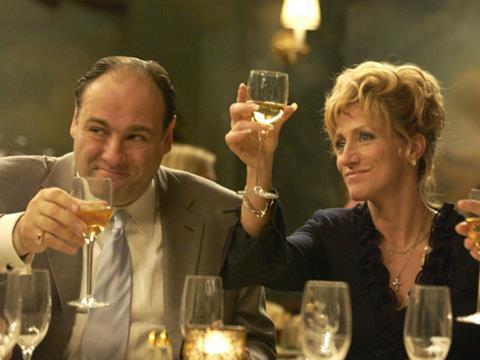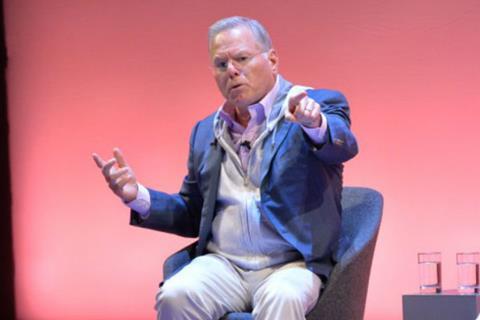It has been a tumultuous 12 months for David Zaslav’s company with a future that remains unclear as suitors circle
It has been quite a year for Warner Bros Discovery (WBD). Rewind just 12 months and the HBO owner’s share price was bottoming out at just over $7.30, an all-time low since its April 2022 launch at $24.43.
It was something of a fall from grace for the home of Harry Potter, Succession and The Sopranos, and chief exec David Zaslav was catching plenty of flak as the company attempted to right the ship towards streaming.

As part of that strategy, late last year WBD revealed plans to split its operations. Streaming – namely HBO Max – and its studios operations would be folded into a Warner Bros company, while linear networks would be housed in a separate entity called Discovery Global.
It was a move to replicate what Comcast has enacted at NBC Universal, as US media giants attempt to extract maximum value by ditching dwindling cable networks and focus instead on the stronger growth opportunities of streaming.
At the same time, David Ellison’s Skydance was working on his move for Paramount, an acquisition that was beset by regulatory delays. In the end, that $8.4bn deal eventually wrapped in August 2025 – by which time WBD’s shares had ticked up to almost $13 apiece.
Scale and opportunity
It didn’t take long for Ellison to install his new management team or confirm synergy cuts of around $2bn. Yet even before the Paramount Skydance deal had formally wrapped, analysts were pointing to the liklihood that another – bigger – piece of M&A could be in the works.

Scale has been seen as the answer to many of Hollywood’s woes over recent years, so it made sense to market watchers that Paramount Skydance – supported by the billions of Ellison’s Oracle-founding father Larry – would look at bulking up with WBD.
After all, it had happened before.
Back in late 2023, Paramount’s then chief exec Bob Bakish met with Zaslav about a potential tie-up. The deal fell away, leaving Ellison to make his move for Paramount, but now he is turning his attention to WBD.
Reports of an initial move by Ellison for WBD emerged in mid-September, prior to which the latter’s shares were hovering at around $13.
Ellison pegged Paramount’s first offer at around $19, which was rebuffed, but propelled shares up more than 30%. A second approach three weeks ago came in at $22, which was again turned down, and a third attempt saw a price of $24 offered, with Zaslav offered the sweetener of a co-CEO position.
The pursuit prompted WBD to go public earlier this week, with The Last Of Us and Dr Pimple Popper outfit admitting it was looking at its options after “unsolicited interest”.
These options include selling off portions of the business, or the company in its entirety, while an “alternative separation structure” could enable a merger of Warner Bros and a spin-off of Discovery Global to shareholders.
Everything, it seems, is up for grabs for the right price - and with the caveat that there’s also WBD’s $35.6bn debt to deal with. But while the internal work to split the company up along linear and streaming lines continues in the background, all eyes are now on what happens next as buyers circle.
Paramount Skydance in pole position
While Zaslav has noted there are “multiple parties” interested in a piece of WBD, most bets are on Paramount Skydance – and that’s because it would create a scale player that could compete.with Netflix.
A wholesale acquisition by Ellison’s company would see streamers Paramount+ and HBO Max living under the same roof, and likely merged to form a heavy-hitting global player. Paramount+ counts around 80 million subs worldwide, while HBO Max stands at almost 130 million.
And its offering would be vast: The Godfather, Top Gun, Star Trek and Yellowstone are among thousands of titles on the Paramount Skydance side, while Dune, The White Lotus, The Pitt, Friends and The Big Bang Theory are among the WBD treasure trove, as well as Harry Potter, The Sopranos and Succession.

US broadcast network CBS and numerous cablenets such as Comedy Central and MTV would sit alongside WBD offerings including HBO, TNT and Discovery Channel, while the storied studio operations of Warner Bros and Paramount Pictures could dominate Hollywood.
Outside of the US, Paramount Skydance owns networks including 5 in the UK and Network Ten in Australia, as well as localised versions of Comedy Central and Nickelodeon. A deal to offload Telefé was confirmed earlier this week.
WBD also continues to operate hundreds of channels around the world including versions of HGTV, Animal Planet and Food Network, as well as TVN in Poland.
On the production side, there’s CBS Studios and Warner Bros. International Television Production, both run out of London, while each US studio also has sprawling content distribution arms selling to buyers worldwide.
Synergy savings would be a major driver behind combining the companies. Paramount Global had 18,600 employees at the end of 2024 but Ellison is poised to cut around 3,000 roles beginning next week as he looks to save $2bn. WBD has around 35,000 workers and any deal would inevitably result in a swathe of further job cuts as replicated roles are removed.
A deal would also require US regulatory approval but Larry Ellison’s close ties with US president Donald Trump are widely seen as being likely to smooth that path. Paramount is also a smaller player compared to other potential suitors, something David Ellison alluded to in his letter to the WBD board, according to the New York Times.
Netflix, Amazon, Comcast and the rest
While Ellison’s appetite for WBD is clear, Netflix is among others touted as a potential suitor for parts of the business but a wholesale acquisition – including its legacy networks – is surely off the table.
Netflix co-chief executive Greg Peters spelt this out earlier this month, pointing to his “scepticism around big media mergers” and Ted Sarandos doubled down during his Q3 earnings call, describing the streaming giant as a builder not a buyer with “no interest in owning legacy media networks.”

He did, however, discuss “selective M&A” and one of the main rumours swirling around Mipcom last week was focused on Netflix eyeing WBD’s content.
The rich HBO catalogue would of course be alluring but sources also pointed to its arguably less fashionable unscripted shows as being able to fill a gap in Netflix’s existing line-up, to engage viewers who aren’t attracted by its current offering.
Amazon has also been touted as a potential buyer of WBD’s alluring parts. Adding Warner Bros and its IP heritage to its 2021 acquisition of James Bond studio MGM would create a stable of heavyweight brands. WBD is also well-versed in selling TV advertising, something Prime Video has been looking to improve upon.
The retail giant was mentioned by Zaslav as an interested party in discussions with his senior execs, according to Bloomberg, with Apple also reportedly interested, although the latter’s more clandestine streaming strategy means it remain a less likely option.
Comcast is also set to be in the running and would find value on the IP side with its NBCU business. It has form in major M&A with the acquisition of Sky, although it is widely seen to have overpaid, and there would seem to be little desire for a wholesale acquisition given that the company is already spinning off NBCU’s legacy cable networks into nascent entity Versant.
All this leaves the longer term future of WBD unclear – but it has been that way for years. The number of interested parties and news that NDAs are soon to be signed – again reported by Bloomberg – suggests the real action is soon to begin as companies peer behind the WBD curtain.
Samuel A. Di Piazza, Jr., chair of WBD’s board, said the company continues to believe that the “planned separation” of its linear and streaming operations will ”create compelling value”, and staff will continue to work towards that end. But he added that exploring all eventualities and “broaden[ing] our scope is in the best interest of shareholders”.
For those in the industry, the next few months will be a fascinating watch as the future of one of legacy media’s most storied companies emerges.
For the tens of thousands of employees at WBD, however, it is just the latest development across a tumultuous period as a heavyweight institution attempts to adapt to a new-look landscape.









No comments yet